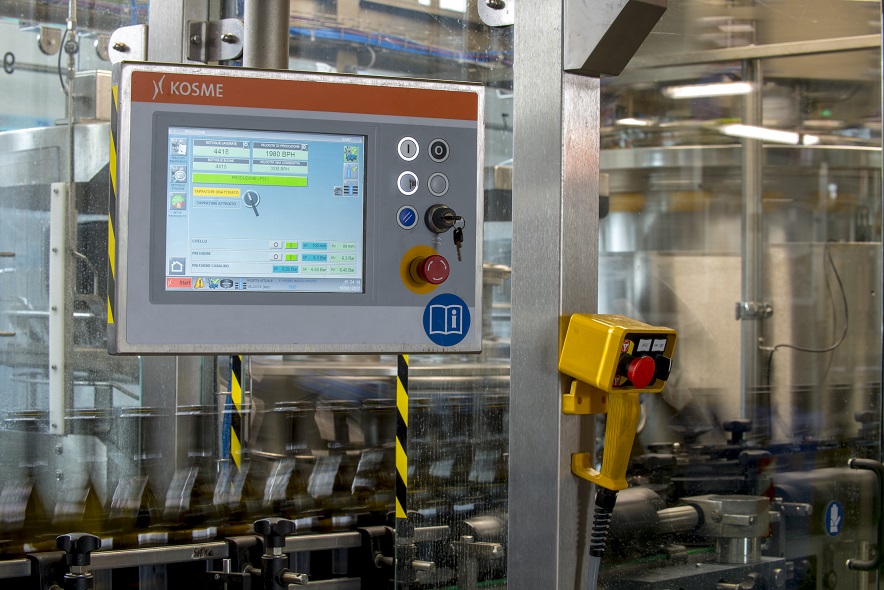The Cellar
Today’s building of De Faveri Spumanti dates back to 1992 and it includes the house, the offices and the cellar. In 2002 Lucio and Mirella decided to expand the plant with a new welcoming area, a new place for the vinification of the grapes and to store the wines. They bought a batch of new tanks, they improved their autoclave equipment to produce Spumante wine, and finally, the twenty-years old bottling machines have been substituted by technological and modern tools. The development is continuous, in fact, a new expansion is taking place.
The present bottling line, bought in 2015, includes a series of machines that allow to produce 2500 bottles per hour with the supervision of only three people.
The process of vinification
The grapes picked are crushed with soft pressed pneumatic presses. To start the fermentation, the must has to have a temperature between 17/19°C, if it is warmer it can be refrigerated. Then, it is left to settle and after that, yeasts are added. The liquid is poured into fermentation tanks, equipped with the automatic control of the temperature. The first fermentation can vary from 10 to 20 days according to the year and the quality. Once ended, Prosecco DOCG is poured and the phase of settling can start, it means the settling and the separation between liquid and yeasts. Finally, it is centrifuged to make the wine clear.
Wine is ready for the secondary fermentation, called also “bottle fermentation”. This happens in specific containers, thermal conditioned and pressure-proof: autoclaves, where sugar and yeasts are added. The ideal temperature for the fermentation is around 19-20°C, a higher temperature can compromise the delicate and characteristic perfumes, whereas at lower temperatures the yeast doesn’t react in the right way. When alcohol, pressure and residual sugar reach the desired level, the liquid is brought at -3/-4° C to stop the fermentation and make the yeasts rest. Now the cold stabilization of the wine can begin, to make it steady and to add the necessary elements inside the autoclave and not in the future bottle. After a month that it is cold sealed, it can be micro filtered to remove the residual yeasts and then bottled.


Bottling line
Special fillers are necessary to bottle Spumante wine: they are pressure machines, called “isobaric”. Unlike the classic ones, they prevent the wine to foam when it is bottled. The technique used is the following: they use inactive gas that doesn’t compromise the quality of the wine, for instance nitrogen. The isobaric fillers brought the empty bottles at 6 atmospheres, in order to be able to balance the pressure of the carbon dioxide in the Spumante, making it similar to a normal liquid, without gas, avoiding that it produces foam inside the bottle.
The filling and tapping are followed by a series of treatments necessary to reach the final product: capsulation, labelling, packing placing them into pallets ready to be sold.







